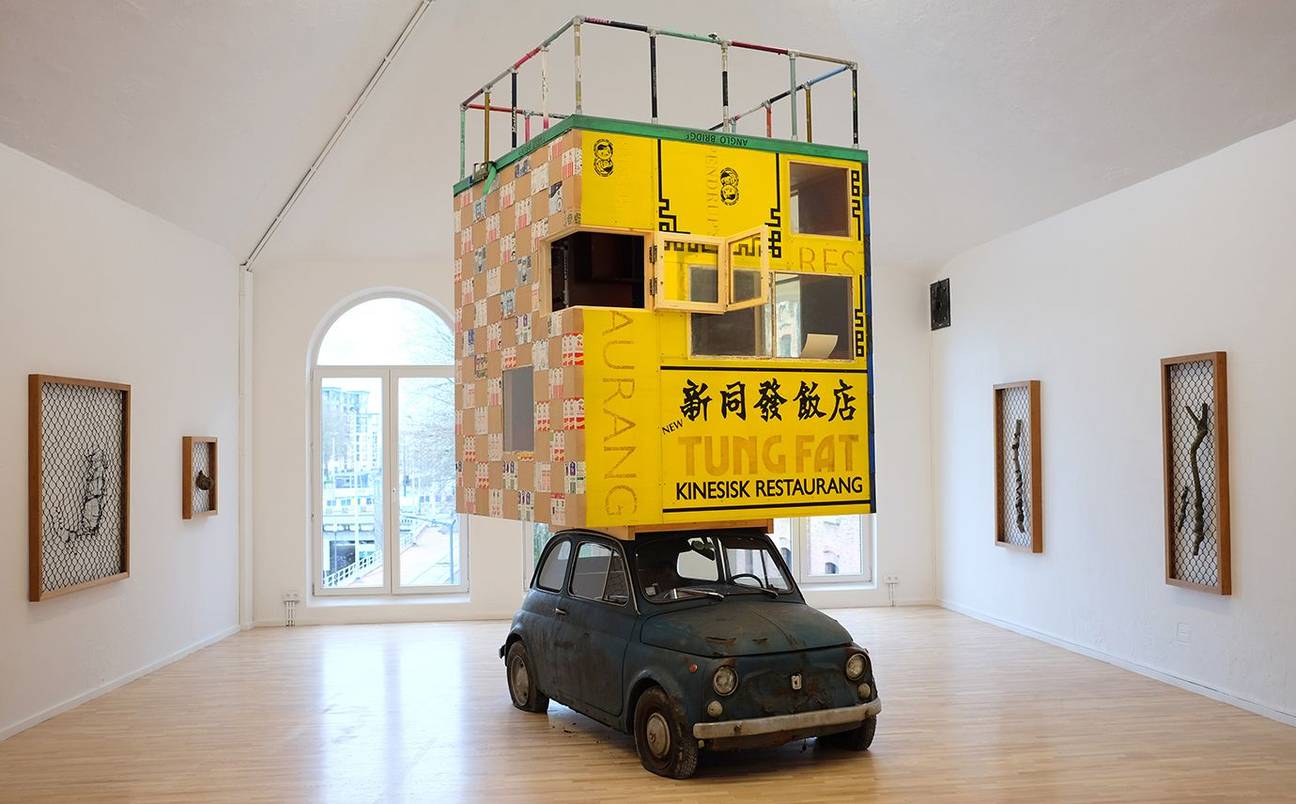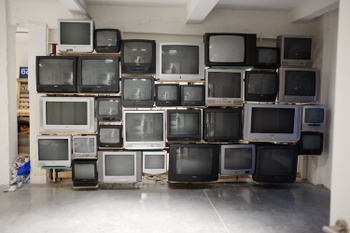A unique kind of campervan, a game of pallet dominoes, a door that you can only open with five hands, or a lock cracking session. The Swedish urban pirates Akay & Olabo have transformed the MIMA into a “Wonderland” for nosy parkers that don’t mind a touch of civil disobedience.

Wonderland at MIMA: off the charts
The MIMA is showing its fourth exhibition, and still, dust doesn’t have time to settle here. What a museum! What an asset to the city! In “Wonderland”, the MIMA has brought together work by Akay & Olabo that attests to such infectious resourcefulness that you leave with a big grin on your face, ready to see the world anew.
And as you notice when entering the exhibition, that world is looking back at you: an ingenious installation of security cameras and television screens turns the visiting observer into the observed. But you don’t have to walk the straight and narrow here. Trespassers will be forgiven. The “private” signs on the wall spell out “public”.
F*ck feng shui
It is this intersection of the private and the public that Akay and Olabo explore. The two Swedish urban pirates cycle across the city, dive into the moment, force their way into abandoned buildings, appropriate advertisements, streets, and metro stations, and develop projects on the spectrum between roguish mischief and civil disobedience.
“Wonderland” inducts visitors into that fearless but peaceful art of forceful entry. A “Crime Investigation Wall” provides an overview – with keys – of the hijacked buildings and the stories that the pair have written there by getting their hands dirty and by recycling everything they could find, moulding it in their DIY sessions that don’t show too much respect for the law, the gospel of the market, or feng shui. Rearranging the city’s furniture to make it feel more like home, as Akay’s partner Rae calls it.

© MIMA
| Panopticon
The fact that Akay and Olabo enter the urban no man’s land and fill up the holes that these unused and neglected places have made in the “conventional map”, is a political act. They do not want to make too much of this themselves – to them it is above all about freedom and the pleasure they take in the deed. But however involuntary this critical dimension may be, it is also inevitable: by tapping into these abandoned places, you reach a different kind of perspective, you become a different, a more active kind of civilian.
You become a cartographer of what is off the charts, bearing witness to “other” places and “other” possibilities, that we don’t see – or rather: choose not to see –, but which do exist and might be a key to connect with whatever is hidden under the layer of clean corporate promo that covers our cities. It is a kind of raw poetry that doesn’t refer to targets and numbers, but rather inspires journeys that enable us to tap into the essence of what we’re here for.
It is thus only right that the MIMA ambitiously presents Akay and Olabo’s art of forced entry as an obstacle course that is focused on discovery: the Fiat campervan, the peepholes, the doors, pallets, mail trolley, panels, ratchet straps… “Wonderland” enchants, disarms, and makes you realize that there are infinite possibilities for those who have the guts to resist, be free, and live life to the fullest.
For those who dare to opt not for the boulevard but for the rabbit hole, to appropriate the city, and (like the artists) to seek encounters. There are always doors that you can’t get open by yourself.
> Akay & Olabo: Wonderland. MIMA, Brussel. > 15/4
Read more about: Sint-Jans-Molenbeek , Expo , MIMA



Fijn dat je wil reageren. Wie reageert, gaat akkoord met onze huisregels. Hoe reageren via Disqus? Een woordje uitleg.